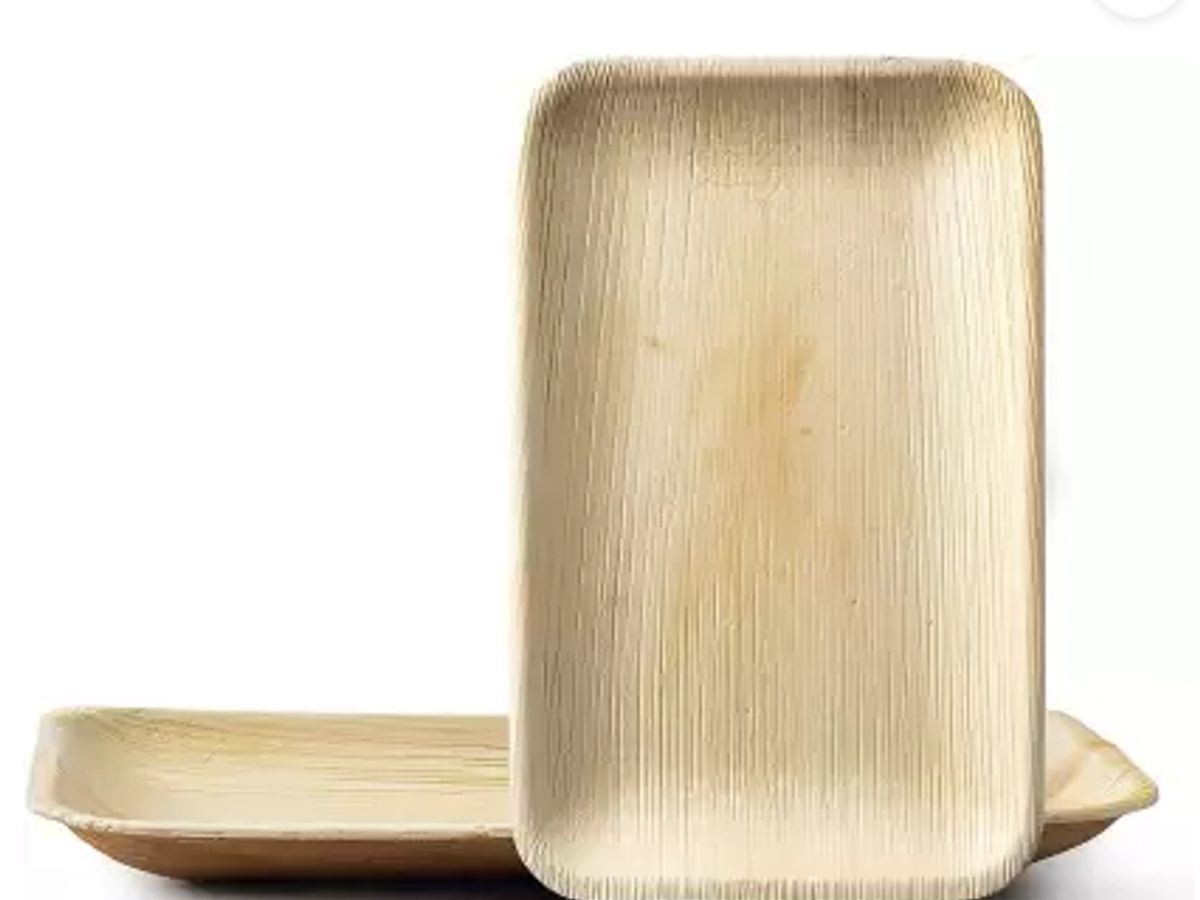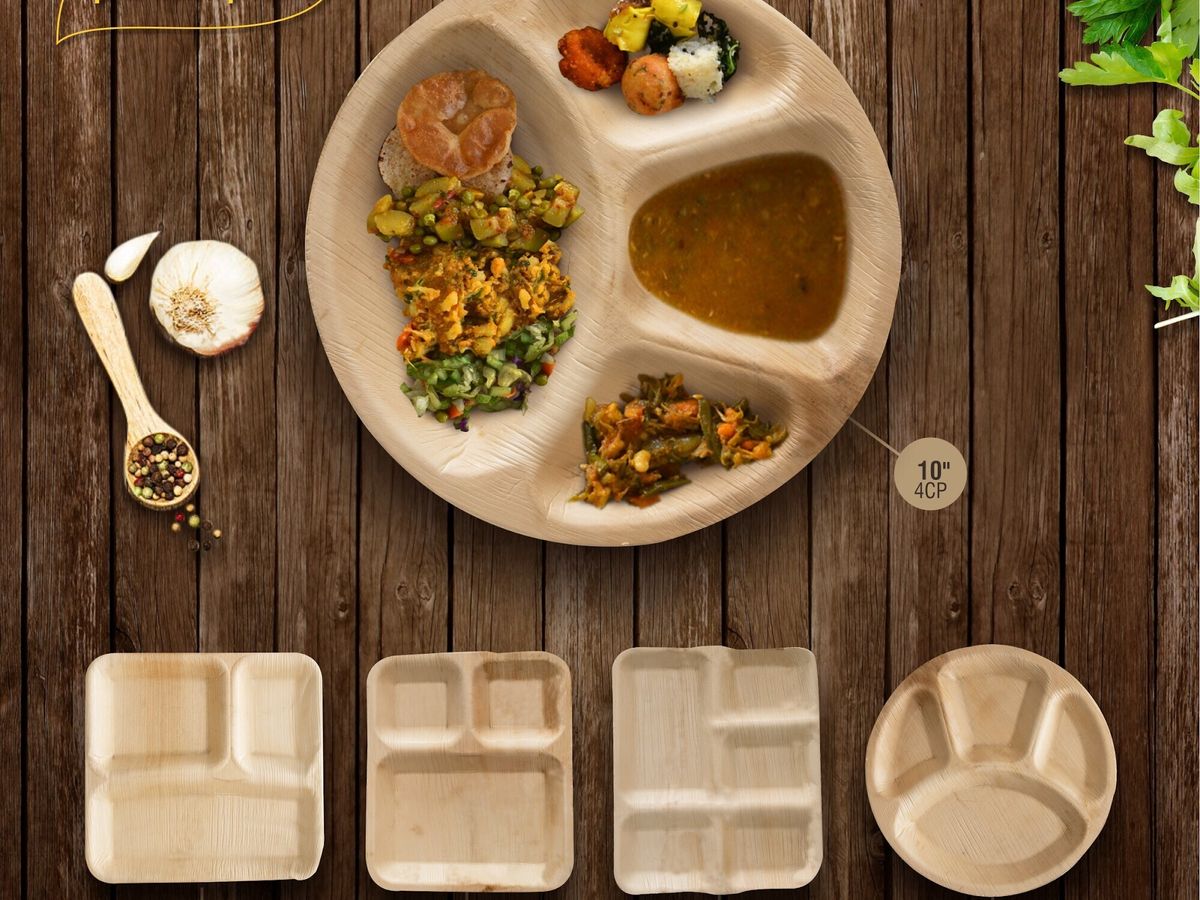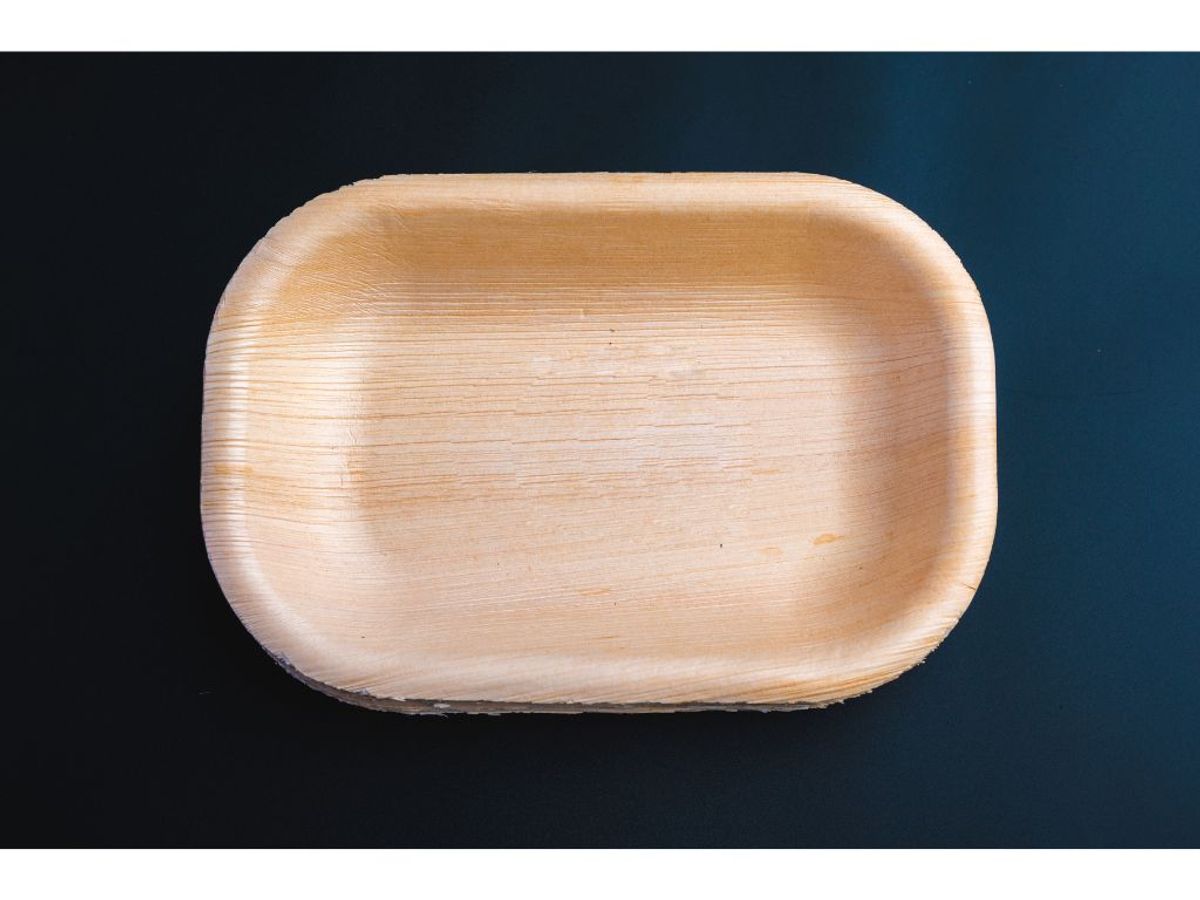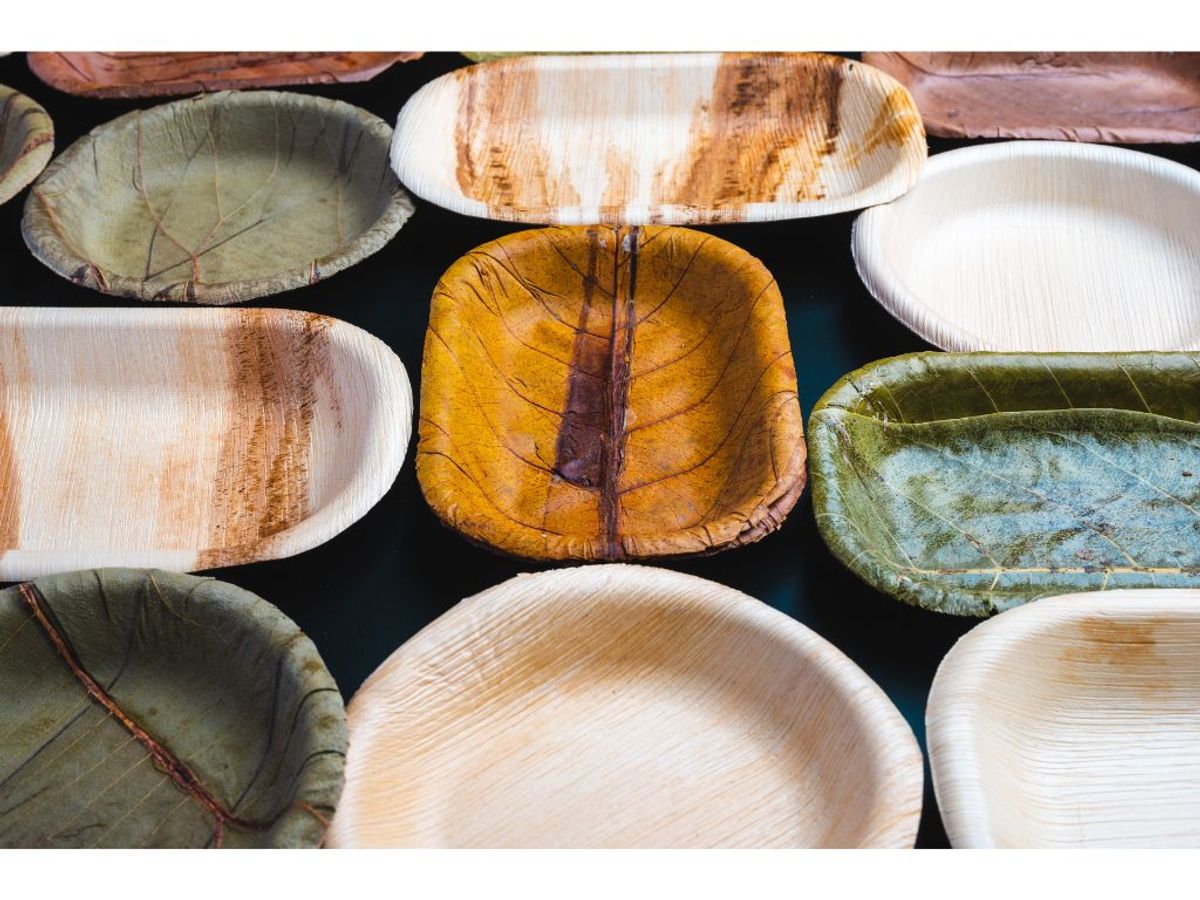The Rise of Leaf Plates: A Sustainable Alternative to Plastic Dinnerware

As people become more aware of the problems caused by plastic, they are looking for better options. One great choice is leaf plates. These plates are made from leaves that fall naturally from trees, making them an eco-friendly option. This article explores why leaf plates are becoming popular, their benefits, and how they can be used in daily life.
Key Takeaways
- Leaf plates are an eco-friendly alternative to plastic, made from naturally fallen leaves.
- These plates are biodegradable and compostable, breaking down naturally within a few weeks.
- Using leaf plates helps reduce plastic waste and supports sustainable practices.
- They are versatile and can be used for everyday meals, events, and even storing food.
- Switching to leaf plates is a simple step towards a greener and more sustainable lifestyle.
Understanding Leaf Plates
What Are Leaf Plates?
Leaf plates are eco-friendly alternatives to traditional plastic and paper plates. They are made from natural materials, primarily the areca palm leaf. These plates are not only biodegradable but also add a rustic charm to your dining experience. They are perfect for both everyday use and special occasions.
How Are Leaf Plates Made?
The process of making leaf plates is simple and sustainable. The leaves are collected, cleaned, and then heat-pressed into various shapes and sizes. This method does not involve any chemicals, making the plates safe for food use. Many areca palm leaf manufacturers follow this eco-friendly process, ensuring that the plates are both durable and reliable.
Types of Leaves Used for Plates
Different types of leaves can be used to make plates, but the most common is the areca palm leaf. Other options include banana leaves and Sal leaves. Each type of leaf has its own unique properties, but the areca palm leaf is favored for its strength and durability. These features make areca palm leaf plates an excellent choice for sustainable dining and tableware options.
Environmental Benefits of Leaf Plates

Leaf plates offer numerous environmental benefits, making them a great choice for eco-conscious consumers. These plates are made from natural materials and are a sustainable alternative to single-use plastics. Let’s explore some of the key environmental advantages of using leaf plates.
Practical Uses of Leaf Plates
Everyday Household Use
Leaf plates are perfect for daily use at home. They are sturdy enough to hold both hot and cold foods, making them a versatile option for any meal. Using leaf plates can reduce your reliance on plastic utensils, which is better for the environment. Plus, they add a rustic charm to your dining experience.
Leaf Plates for Events and Catering
For events and catering, leaf plates offer a sustainable and stylish alternative to traditional disposable plates. They are available in various shapes and sizes, making them suitable for any occasion, from weddings to corporate events. Many [areca palm leaf manufacturers](https://arbhuenterprises.com/blog/what-is-the-scope-for-the-export-of-areca-leaf-plates/) provide bulk purchase options, ensuring you have enough plates for large gatherings.
Storing Food with Leaf Plates
Leaf plates can also be used for storing food. They are naturally moisture-resistant, which helps keep food fresh for longer periods. This makes them ideal for storing dry foods like nuts, fruits, and snacks. Additionally, they are fully biodegradable, so you can dispose of them without worrying about harming the environment.
Comparing Leaf Plates to Other Eco-Friendly Alternatives

Leaf Plates vs. Plastic Plates
When you compare leaf plates to plastic plates, the environmental benefits are obvious. Plastic plates cause pollution and create waste that can last for hundreds of years. On the other hand, leaf plates, especially those made from the areca palm leaf, break down naturally and add nutrients back to the soil. This makes them a more sustainable and eco-friendly choice.
Leaf Plates vs. Paper Plates
Leaf plates have several advantages over paper plates. While both are disposable and compostable, leaf plates are usually stronger and can hold both solid and liquid foods without getting soggy. Also, leaf plates are made from renewable resources, while paper plates often require cutting down trees, which can harm forests and wildlife.
Leaf Plates vs. Other Biodegradable Options
Leaf plates stand out among other biodegradable options because of their unique mix of sustainability and practicality. They are made from organic materials and are fully compostable, making them an excellent choice for eco-conscious consumers. Other biodegradable options might not be as durable or might need more resources to produce, making leaf plates a superior alternative.
Quality and Safety Standards for Leaf Plates

Certifications and Quality Standards
Ensuring that [areca palm leaf plates](https://arbhuenterprises.com/blog/quality-control-in-palm-leaf-plate-manufacturing/) meet high-quality standards is crucial for consumer safety and product reliability. Many manufacturers adhere to international certifications such as ISO and SGS, which validate the quality and safety of the plates. Additionally, some manufacturers provide a Certificate of Origin and a Fumigation certificate with shipments.
Ensuring Product Safety
Product safety is a top priority for areca palm leaf manufacturers. These plates are made without harmful chemicals, making them safe for food use. Regular quality checks, including UV and moisture control, are conducted before packaging to ensure the plates are free from contaminants.
Durability and Reliability
Areca palm leaf plates are known for their durability and reliability. They are sturdy enough to hold both solid and liquid foods without leaking. The heat-pressing process used in manufacturing gives the plates their strength and rustic appearance. This method ensures that the plates are not flimsy and can withstand regular use, making them a reliable choice for various occasions.
Challenges and Future Prospects

Overcoming Resistance to Change
One of the main challenges in promoting areca palm leaf plates is overcoming resistance to change. Many people are used to using plastic and other disposable tableware, making it hard to switch to more sustainable options. Education and awareness campaigns are essential to inform individuals about the environmental impact of plastic and the benefits of using leaf plates. Government policies and regulations that promote the use of eco-friendly alternatives can also significantly contribute to overcoming this resistance.
Innovations in Leaf Plate Technology
The future of leaf plates looks promising with ongoing advancements in materials science and sustainable manufacturing techniques. Researchers and manufacturers are exploring new materials and production methods to further enhance the environmental performance of disposable tableware. For instance, some areca palm leaf manufacturers are developing plates that are even more durable and aesthetically pleasing. These innovations not only improve the product but also make it more appealing to a broader audience.
Policy and Regulatory Support
Government support and regulatory frameworks play a crucial role in promoting sustainability and incentivizing eco-friendly practices. Many countries have implemented policies to reduce single-use plastics and encourage the use of biodegradable alternatives. By aligning regulations with environmental goals, governments can facilitate the transition towards a more sustainable and circular economy.
Conclusion
In the end, leaf plates are a smart and green choice for everyone. They are made from natural leaves, which means they break down easily and don’t harm the Earth. By using leaf plates, we can cut down on plastic waste and help keep our planet clean. These plates are strong and can be used for all kinds of meals, from everyday dinners to big parties. Switching to leaf plates is a simple way to make a big difference. So next time you need a plate, think about choosing leaf plates and join the movement for a healthier planet.
Frequently Asked Questions
What are leaf plates?
Leaf plates are eco-friendly dishes made from fallen leaves of various trees, like palm or banana. They are cleaned, dried, and pressed into shape, creating sturdy plates for serving food.
How are leaf plates made?
Leaf plates are made by collecting naturally fallen leaves, cleaning them, and then pressing them into shape using heat. No chemicals are used in this process, making the plates safe for food.
Are leaf plates safe for food use?
Yes, leaf plates are safe for food use. They are made without any chemicals, ensuring that they are safe to hold both hot and cold foods.
Can leaf plates be reused?
Leaf plates are generally designed for single use. However, if they are not too soiled, they can be gently cleaned and reused a few times.
How long do leaf plates take to decompose?
Leaf plates decompose naturally within a few weeks to a few months, depending on environmental conditions. This makes them a great compostable option.
What are the environmental benefits of using leaf plates?
Using leaf plates helps reduce plastic waste, supports sustainable practices, and they are biodegradable and compostable, enriching the soil as they break down.


